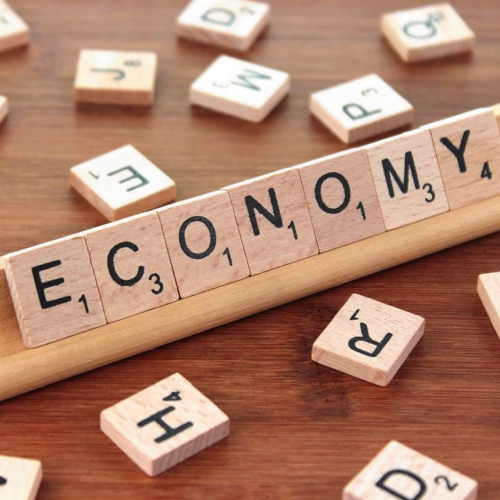New Delhi [India], May 25: Dr Bibek Debroy, Chairman, Economic Advisory Council to Prime Minister Narendra Modi, projects that India will grow comfortably at a real rate of 7.5 per cent to pass through the upper-income category and approach the high-income status by 2047. Dr C Rangarajan, former Chairman, Economic Advisory Council to Prime Minister, calculates that India would need to grow at a real rate of 6.18-6.74 per cent to achieve the status of a higher-income country by 2047. Both economists arrive at similar numbers though they take different starting figures and currencies to project their calculations in their papers on macro-economic essentials.
Twenty-three renowned economists have detailed their roadmap to India 2047 in the book ‘India 2047 – High Income with Equity’, put together by Sameer Kochhar, Chairman, SKOCH Group, Reforms Historian and Author of ModiNomics.
Sameer Kochhar says, “It has always been my attempt to grasp the full magnitude of the direction given by the Prime Minister and translate it into an action agenda by garnering the best available expertise in the country to make the ‘how’ of the idea more widely understood. This becomes a great reference point for policy making and effective implementation.”
Prime Minister Modi will likely highlight his vision of the roadmap of Amrit Kaal during the forthcoming meeting of Governing Council of the Niti Aayog on 27th May 2023. The book is also being released and discussed on the same day at Dr Ambedkar International Center in New Delhi.
“Over the next 25 years, India needs to strengthen its parliament and make systems more resilient. Sameer’s book is an apt commentary that suitably covers all aspects of cooperative federalism and provides a lucid prescription of what needs to be done by learning from our past lessons,” says Dr Vijay Kelkar, Chairman 13th Finance Commission.
The book highlights the need for better credit availability for MSMEs and other vulnerable sections to achieve spatially dispersed, job-generative, and equitable growth. The book provides policy prescriptions for structural transformation, increasing employment formality, Infrastructure and financing and the use of Digitalisation for inclusive growth.
While talking about the book, N K Singh, Chairman, 15th Finance Commission says, “This volume contains an in-depth analysis of significant policy issues in addressing contemporary challenges, high growth coupled with fiscal consolidation, and reconciling the dichotomy between inclusiveness and inflation management with macroeconomic stability. It brings together domain experts over experience, skill, and understanding.”
Kochhar added, “My earlier books, ModiNomics, Defeating Poverty and Modi’s Odyssey: Digital India, Developed India have served this purpose as well.”
Pre-COVID, India had set a target to become a USD 10 trillion economy by 2030, the action plan for which was outlined in Kochhar’s earlier volume, ‘India 2030’, released in December 2018. This emphasised the need for quality growth that is job-generative, spatially dispersed, and equitable.
The current volume aims to review progress and make recommendations to bridge gaps in line with the new target date and objectives. It also discusses the macroeconomic essentials required to make India a high-income country with equity.
The book ‘India 2047’ deals with macroeconomic essentials and emphasises the need for structural transformation, organising the labour markets, increasing competitiveness, enhancing financial and social inclusion with equitable growth, the role of federalism in inclusive growth, imperatives for job-generation and the importance of infrastructure development and financing.
Dr Bibek Debroy, Chairman, Economic Advisory Council to the Prime Minister writes in his paper ‘India in 2047: Looking Back and Looking Forward’: “In that transition to 2047, it will pass through the upper-middle-income category and approach the high-income status–presently defined as more than USD 12,695.This will have implications that are impossible to completely grasp today. Poverty levels will decline sharply. There will be socioeconomic churn. Since the GDP is an imperfect measure, the United Nations Development Programme (UNDP) has evolved the notion of the human development index (HDI), based on per capita income, life expectancy, and education indicators. By 2047, India will move from the present medium human development category to the high human development category. The global clout will increase greatly.”
Dr C Rangarajan, Chairman, 12th Finance Commission and Former Chairman, Economic Advisory Council to the Prime Minister in his essay, ‘India at 75 and Beyond: A Macro View’ says, “On the issue of achieving the status of a developed economy, several assumptions will have to be made. First, the current (2022) criterion for determining the status of a developed country is reaching a per capita income level of USD 13,205. It was USD 12,696 in 2021 and USD 12,276 in 2011. Changes over time have been limited. In one scenario, we assume that the criterion would be the same even in 2047. We also give an alternate scenario in which the cut-off is raised to USD 15,000. The calculations show that with no change in the cut-off, the required annual nominal growth rate for the next twenty- five years is 10.18 per cent and with the assumption of a rise in the cut-off, the required nominal growth is 10.74 per cent.”
He further says, “With an inflation assumption of 4 per cent, the real rate of growth will have to be 6.1 per cent in the first case and 6.74 per cent in the second case. Trying to achieve the status of a developed country by 2047 will mean strong growth of around 7 per cent per annum over this entire period.”
He adds, “The reform agenda must continue as it has been under various regimes. Policymakers should identify the sectors that need reforms in terms of creating a competitive environment. and improving performance efficiency. The Centre and states must be joint partners in this effort.”
Reforms historian and author of best-seller ModiNomics, Sameer Kochhar is Chairman, SKOCH Group. He is a passionate advocate of social, digital and financial inclusion and is a foremost expert on governance and inclusive growth. His work has been acclaimed globally and endorsed by Narendra Modi, M Venkaiah Naidu, Dr Manmohan Singh, Arun Jaitley, P Chidambaram, Yashwant Sinha, Dr C Rangarajan and Dr Montek Singh Ahluwalia. In his thinking and writings and activities, his profound admiration for India’s economic reforms and in extension, those outstanding personalities who strive to make these reforms more meaningful and broad based comes out clear and unambiguous. He has published over 17 volumes, the notable being India 2030 – A Socio Economic Paradigm; ModiNomics; Defeating Poverty: Jan Dhan and Beyond and Modi’s Odyssey: Digital India Developed India.
SKOCH Group is India’s leading think tank dealing with socio-economic issues with a focus on inclusive growth since 1997. The Group companies include a consulting wing, a media wing and a charitable foundation. SKOCH Group is able to bring an Indian felt-needs context to strategies and engages with Fortune-500 companies, State Owned Enterprises, Government to SMEs and Community-Based Organisations with equal ease. The repertoire of services includes field interventions, consultancy, research reports, impact assessments, policy briefs, books, journals, workshops and conferences. SKOCH Group has instituted India’s highest independent civilian honours in the field of governance, finance, technology, economics and social sector.
(Disclaimer: The above press release has been provided by PRNewswire. ANI will not be responsible in any way for the content of the same)












